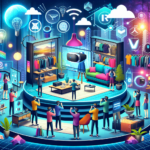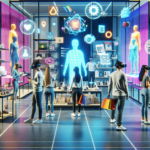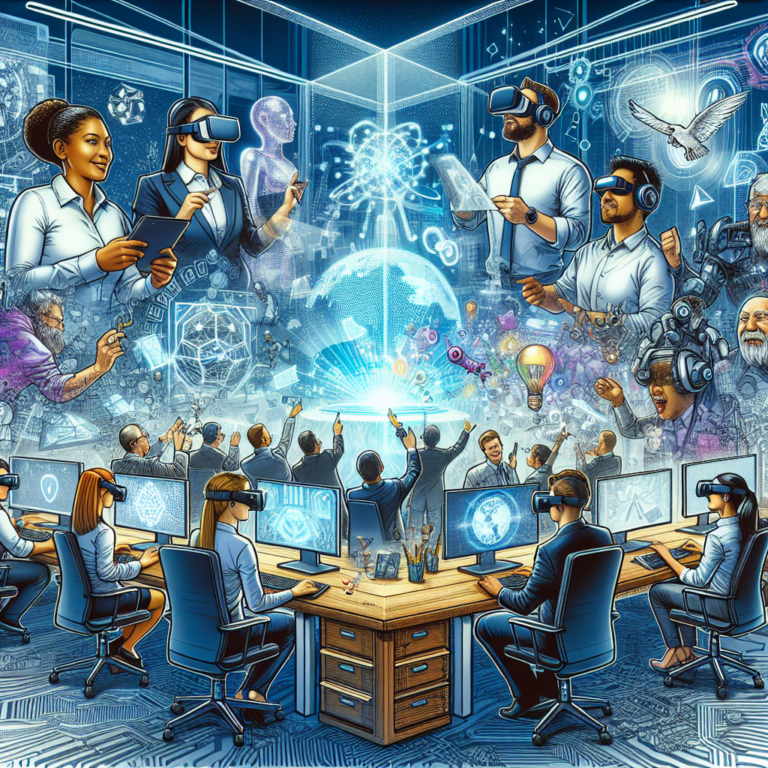Transforming Virtual Workspaces: The XR Revolution in Remote Collaboration
Introduction: Embracing the Future of Work
As remote work continues to evolve, organizations are continually seeking innovative solutions to enhance collaboration among teams spread across the globe. Enter Extended Reality (XR) — a transformative technology that includes Virtual Reality (VR), Augmented Reality (AR), and Mixed Reality (MR) — paving the way for immersive virtual experiences that redefine teamwork. 🌍✨
Understanding XR Technologies
What Is XR?
Extended Reality (XR) is an umbrella term that encompasses various immersive technologies, such as:
- Virtual Reality (VR): A fully immersive experience that transports users into a digital environment.
- Augmented Reality (AR): Integrates digital elements into the real world, enhancing our perception of reality.
- Mixed Reality (MR): A blend of both VR and AR, allowing real and virtual elements to interact in real time.
How XR Enhances Remote Collaboration
XRs potential to change the game of remote work is remarkable. Here’s how:
- Immersive Interaction: XR environments foster a sense of presence and interaction that traditional video conferencing tools can’t replicate. Team members can feel like they are physically together, even when they are miles apart.
- Enhanced Communication: Utilizing avatars and virtual meeting spaces, teams can communicate more effectively. Non-verbal cues can be conveyed through body language in 3D space, adding an extra layer of understanding.
- Real-Time Collaboration: XR allows multiple users to interact with the same virtual object simultaneously, creating opportunities for collaboration on projects in real time, regardless of location.
- Accessible Learning Environments: Training sessions can be transformed into interactive, engaging experiences. New hires can learn in simulated environments, making the onboarding process much smoother.
Industry Applications of XR in Remote Work
1. Design and Engineering
In the realms of design and engineering, XR can bring blueprints and models to life. Teams can collaborate on intricate designs in a flexibile digital space, adjusting and sharing ideas instantaneously. This leads to:
- Reduced Errors: Visualizing designs in MR can help identify flaws before physical prototypes are even created.
- Cost Efficiency: An immersive design collaboration can save significant costs in prototyping phases.
2. Healthcare
The healthcare sector is also leveraging XR to enhance telemedicine and training for medical professionals. Through virtual simulations, medical teams can:
- Practice Skills: Surgeons can rehearse complex procedures in a virtual environment before performing them in real life.
- Consult and Diagnose: Patients can visit their doctors in an immersive 3D environment, ensuring a more focused interaction.
3. Education
Education is another field seeing a surge in XR applications. From virtual classrooms to realistic simulations, the possibilities are endless:
- Engaging Learning Experiences: Lessons can incorporate interactive elements, making learning memorable and effective.
- Cultural Exchange: Students can take virtual field trips to far-off places, enhancing their understanding of various cultures.
The Impact of XR on Team Culture
Building Trust and Relationships
One of the greatest challenges of remote work is fostering a sense of community and trust among team members. XR can help build this culture by:
- Facilitating Social Interactions: Virtual hangouts can replace traditional break rooms, allowing team members to bond over shared experiences.
- Creating Unique Celebrations: XR enables teams to celebrate milestones or achievements in engaging ways, ensuring that everyone feels valued and included. 🎉
Promoting Productivity and Innovation
With enhanced collaboration comes increased productivity. Teams working in XR environments can:
- Innovate Faster: Brainstorming sessions become dynamic when using XR, leading to creative ideas that come to life more quickly.
- Stay Engaged: The immersive nature of XR keeps team members engaged and motivated, preventing the fatigue often felt in traditional remote work settings.
The Future of XR in Remote Workspaces
Continuing Advancements
As technology continues to advance, the capabilities of XR will only expand. Emerging trends to watch include:
- AI Integration: Artificial intelligence could streamline user interactions, providing personalized experiences in XR environments.
- Wearable Technology: Devices like smart glasses will further augment our ability to interact with digital elements seamlessly.
- Broader Accessibility: As costs decline and technology becomes more accessible, more organizations will adapt XR solutions for their remote work strategies.
Final Thoughts
The intersection of XR technology and remote collaboration is more than just a trend; it represents a significant shift in how we work together. As companies increasingly embrace these tools, the boundaries of where work can happen and how teams communicate will continue to expand, leading to a more connected, innovative, and productive workforce.
Stay tuned as the XR landscape evolves – the future of remote work is certainly exciting! 🚀




0 Comments